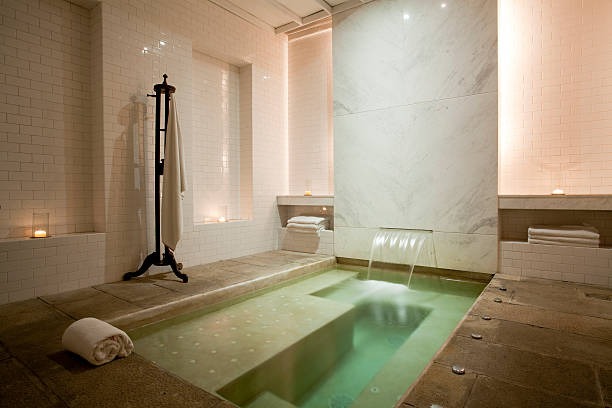Ceramic vs Porcelain Tiles – Plus Glazed vs Unglazed: What’s the Real Difference?

When it comes to choosing the best tile for your business or home, it’s essential to consider a range of factors that affect the appearance and functionality. From cost and durability to absorption rates for water and slip resistance, these factors can help you align your tiling choices to specific needs and requirements.
Cost
Ceramic and porcelain tiles despite having the same name are different. They both fall within the category of rigid clay-based ceramic tiles, however they differ in their water resistance and durability. The best tile can help you find the right balance between your budget with the aesthetics of the area.
Ceramic and porcelain provide a variety of designs to match any taste. Ceramic tiles can make sleek and contemporary spaces, and also mimic the texture and warmth of natural gach lat nen 60×120 materials like wood and stone.
Porcelain is a denser and tougher tile than ceramic, making it more robust. It can withstand heavier foot traffic, high humidity levels, and cold temperatures.
The hardness and density come at a cost, however, because it’s more expensive to produce and install. Ceramic is porous and softer. It’s also easier to cut than porcelain, which could make it an ideal choice for DIYers. It can be more fragile, so it might require professional installation in certain cases. It is also less absorbent of water, making it better for moist areas.
Durability
Based on their intended usage the costs for maintenance associated with each tile will differ. Ceramic tiles are more durable and resistant to heat and water than ceramic tiles. It is also more durable, which means that it will last longer and will stand up to heavy foot traffic.
Glazed porcelain tile has a protective glaze that resists staining and bacteria. This makes it a fantastic option for kitchen backsplashes and other areas that are subject to a lot of moisture. It is scratch- and chip-resistant, so it can be used to create a variety of design aesthetics.
Now, it is possible to digitally print any pattern or image onto porcelain using ink jet technology. This enables wood reclaimed, rare stone and other distinct aesthetics to be precisely replicated. This method has the benefit that it minimizes environmental impact as well as avoiding the reduction of natural materials. This makes it ideal for residential and commercial projects that prioritize long-term durability. It is crucial to make sure that the tile you end up with is in line with industry standards.
Maintenance
The style of tile you choose will affect the range of factors, such as the initial cost along with installation requirements, as well as ongoing maintenance requirements. Ceramic is a great choice for areas that are prone to moisture as well as ceramic’s budget-friendly beauty for lower traffic zones.
Both options are gorgeous and will enhance your client’s home. If your client wants an extremely durable flooring option ceramic is an ideal choice. It’s more dense, durable and less susceptible to chipping, as well as more resistant to moisture and stains than ceramic.
The porosity of the surface affects the performance of ceramic tiles as they age. Ceramic tile absorbs water quickly, ranging between 3% and 7% of its weight in one square inch. This is why it is not a good option for environments with high humidity, where mildew and mold could flourish or freeze-thaw damage could be caused. It is also more susceptible to staining, particularly from acidic foods. It also requires frequent cleaning to avoid surface degradation. Ceramic tiles are more costly to purchase and install due of the denser material. It is expensive to renovate a house.
Style
Selecting the best tile for your project can feel like a daunting task. An incorrect choice could result in expensive replacements, headaches with maintenance and design blunders that can last for years.
Understanding the differences between ceramic and porcelin will aid you in selecting the best tile for your project. If you’re looking for the durability, design flexibility and moisture resistance porcelain could be the right option for your next project.
Both glazed and unglazed porcelain tiles are made from refined clays mixed with natural pigments then fired to create a hardness. They are heated to greater temperatures and for longer durations than ceramic tiles. This results in porcelain tiles that are harder, denser and less porous. This makes them ideal for use in heavy traffic areas and commercial projects. Ceramic tiles are more susceptible to wear and tear, and can break faster than porcelain. Ceramic tiles aren’t as durable to water and humidity, which is why you shouldn’t apply them in areas with a lot moisture or humidity.
The Most Suitable Tile for Bathrooms or Kitchens
The tiles you select in a kitchen remodel or bathroom can make a big difference in the style and functionality of your home. While both ceramic and porcelain tiles are reasonably priced for walls and floors each has distinct advantages that could be suited to your project’s specific requirements.
Ceramic and porcelain tiles are available in a wide range of shapes, sizes and colors to suit your vision. Select from traditional shapes such as rectangles and squares, geometric patterns that are attractive and big format tiles for contemporary and sleek design.
Porcelain tiles absorb less water than ceramic tiles. This is why they are a good choice for areas that are damp like bathrooms and patios. They can be finished to resemble natural stone or wood for an elegant look. Ceramic tiles are also more stain resistant. Ceramic tiles are more costly and require professional installation due to the fact thatthey’re denser. In areas with high traffic the glazed surface can be worn away over time, showing the tile’s underlying color.



